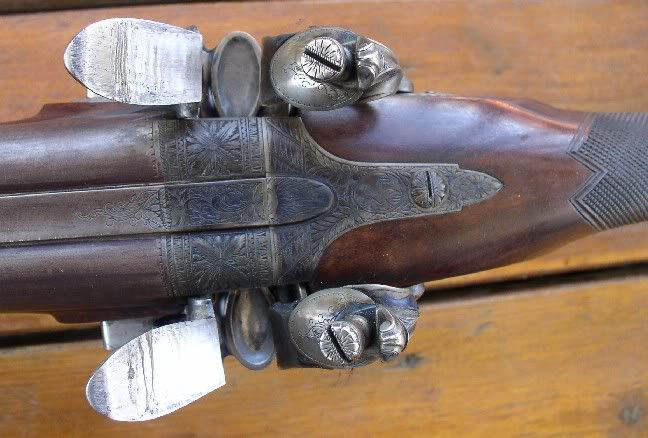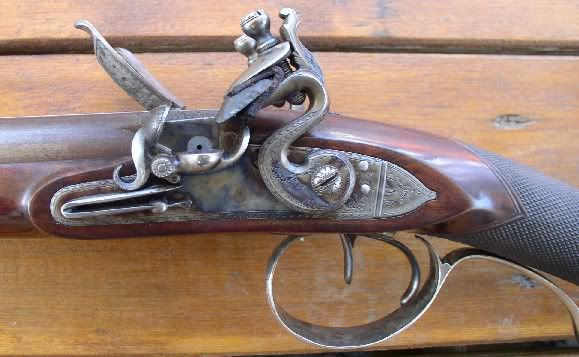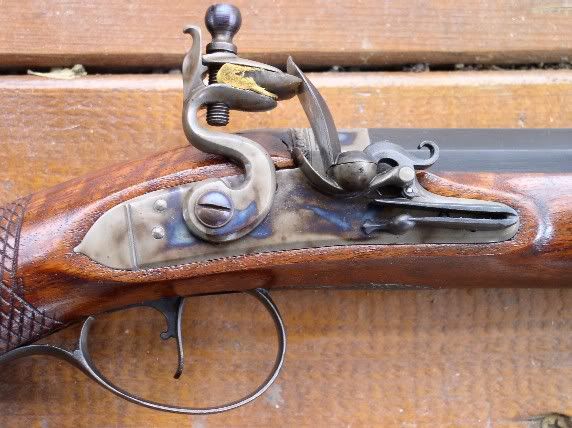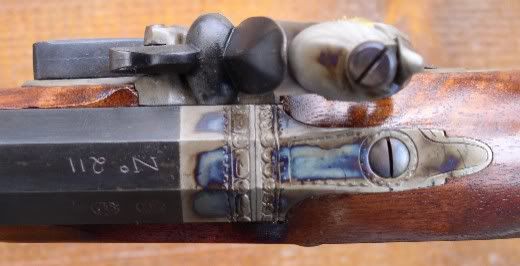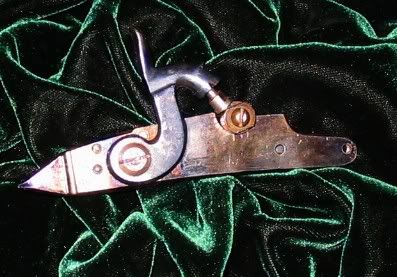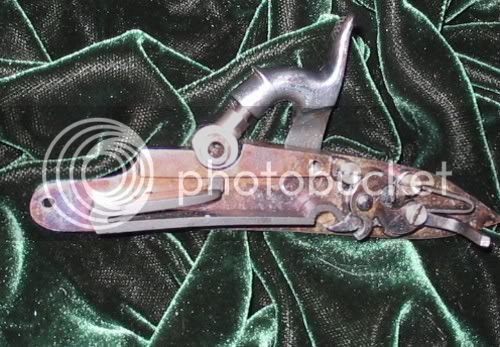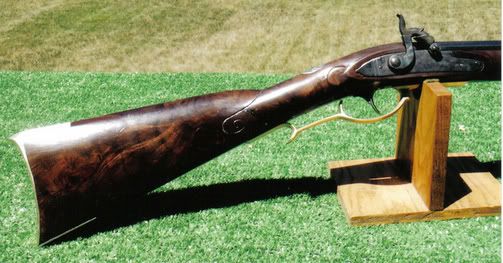Color case hardening is a fairly complex process envolving packing the object in a box with ground bones and/or leather scraps and heating it to very high temperatures. Then quenching it. In my opnion, it is beyond the range of things a home gunsmith can do (although others may say they have done it).
Creating colors on steel to make it look like it was color case hardened on the other hand, is fairly easy.
I did this to this lock plate using a very small propane torch. This torch is the kind with a hose that screws onto the Propane bottle and it is intended to do things like solder small parts, etc. The reason for using a very small torch is you will want to keep the heat localized to only one small area.
If you can't get a pencil torch, you could try using 2 pieces of steel or aluminum to "mask" the adjacent surface, leaving a gap of about 1/4 to 3/8 inch between the masks. This would protect these areas from the large flame from a standard torch, but they would keep you from seeing what's happening there until you removed them. Who knows, the suprise might be just what your after.
The idea is based on the fact that steel will turn different colors as it is heated. (These colors are important to those who are Tempering hardened steel but for this decorative purpose tempering has nothing to do with it. We just want to heat the steel to change its color.
The colors will form in this order, at these temperatures:
430 degrees F Yellow, 500 degrees F Brown, 540 degrees F Purple, 570 degrees F Blue.
Before doing this, I removed all of the parts from the lockplate and polished it. Then, I applied the heat to a small area, using a bright light to look for the color to develop. As soon as it got to the Brown/Purple stage, I quenched the part in oil.
After cleaning the oil off of the plate, I repeated the process in another area.
If you overheat the area, it will turn gray. Once this has happened, no amount of heat will turn it back, but if you sand off the gray finish and start over, the colors will return.
As you can see, the heat colors the inside of the lockplate as well as the outside. If you don't want the inside colored, you can sand the color off.
This Coloring is not very durable but if it is not subject to much abrasion, and it is kept oiled, it will last for years.




